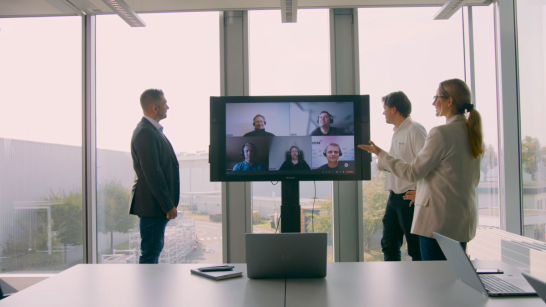5G as a Success Criterion for Smart Intralogistics
Everyone in intralogistics is talking about autonomous and networked transport vehicles as well as intelligent and AI-controlled warehouse management. In the future, these will include hundreds of elements that act and react autonomously with each other. The challenge: It doesn't work without the right network. 5G can be a strong advantage in such complex infrastructures. This is precisely where the CampusOS research project came in. It has been examining the use of open 5G campus networks in industry over the past three years. KION was involved as a central partner and carried out practical tests to determine which infrastructures are required in warehouses – and can now offer its customers even better solutions on this basis.
2025-04-23
.jpg)
.png)
.jpg)


